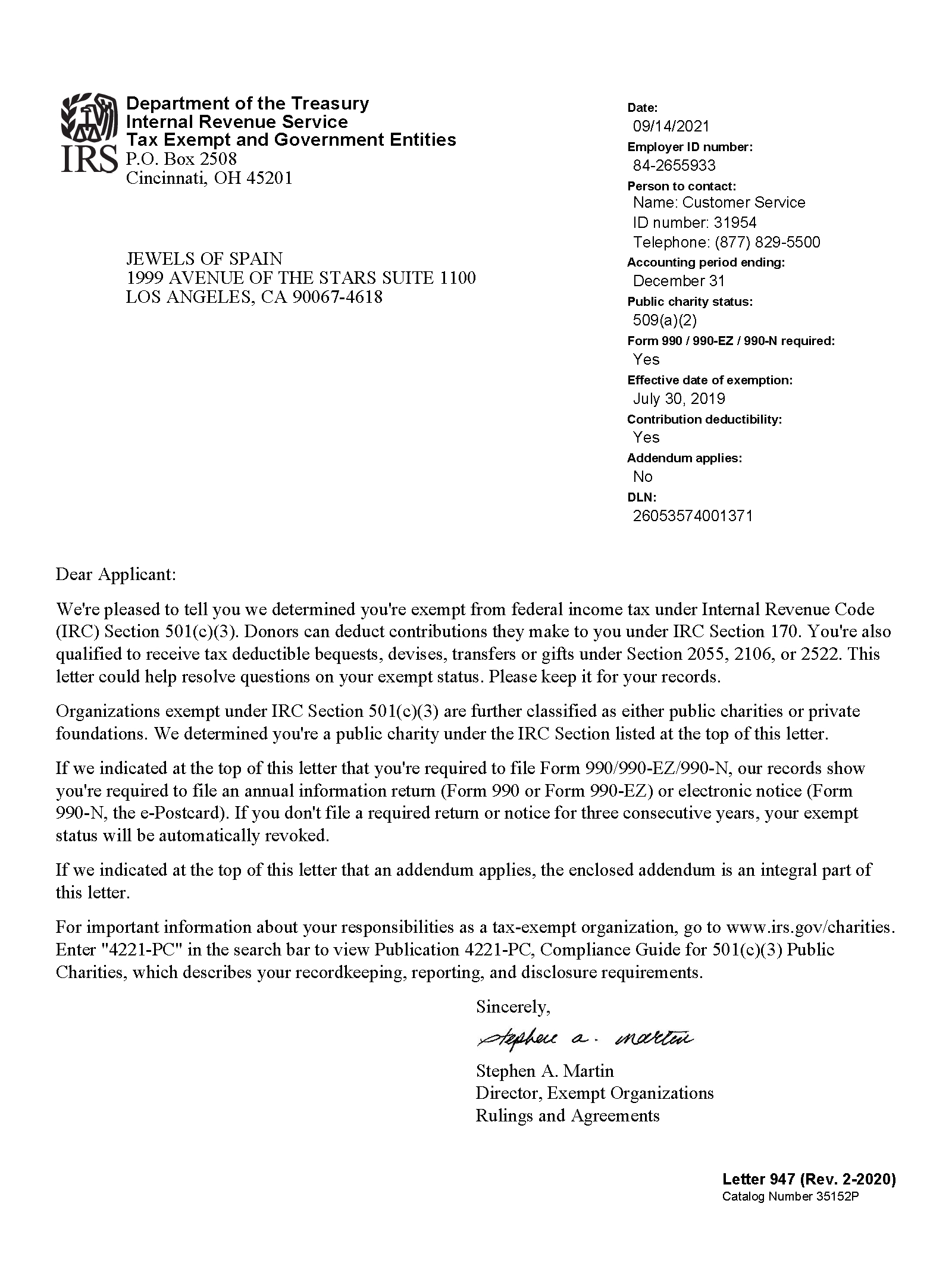Jew'els of Spain
a Documentary TV Series
Writers Guild of America, West • Intellectual Property Registration Number: 1600568
Treatment
Storyline
For over 500 years there has been a story in the collective memory of the civilized world… A story told as the tragedy of a community when they were sent to exile because of their religion, beliefs and traditions. Their tragedy and its aftermath will forever be engraved on their people and in the world’s history as a great injustice. However, like in any other story, there is another side…
This is the story of the Sephardic Jewish community and their journey through the centuries before and after their eviction from Spain in 1492. This documentary narrates the most significant events in the world from the 13th century to the present, placing the story of the Sephardic Jewish people’s life in Al-Andalus and their struggle to survive after their expulsion in a global context.
After Tariq ibn Ziyad invaded the Iberian Peninsula in 711 A.D., Al-Andalus was the name given to what today is known as Spain, Portugal and France. Al-Andalus became a province of the Umayyad Caliphate and the new rulers allowed absolute freedom of worship among all people, as the Quran mandates. Islam regards Jews and Christians as “People of the Book” whose holy writings have to be respected as foreigners of the prophet Muhammad’s final revelation. Thus, Moorish Muslims lived in relative harmony with Jews and Christians for almost 300 years.
In the Golden Age of Al-Andalus, during the 9th and 10th centuries and under the ruling of the Caliphate of Cordoba, the Moorish civilization flourished, making the city of Cordoba the busiest city in Europe. Their libraries held more books than all the libraries of Europe together. Jews and Christians had prominent positions in the Islamic State and they prospered together…
With the capitulation of the Emirate of Granada on January 2, 1492, the “Reconquista” was finally over. On March 31, 1492, the Alhambra Decree, also known as the Edict of Granada, was signed ordering the expulsion of Jews from Spain by July 31st of that year.
The time of tolerance in Al-Andalus was lost forever…
Until that time, knowledge had traveled from East to West…
Al-Andalus was like an oyster that cultivated and enriched Sephardic Jewish people like pearls. As the oyster’s shell protects the pearl that it carries inside, Sephardi Jews protected their beliefs, customs, traditions, heritage and language. Like pearls of knowledge scattered around the world, they spread their culture and wisdom they acquired during Al-Andalus’ Golden Age towards the East, the Ottoman Empire, different parts of Europe and the new continent, America…
The Ottoman Empire issued a formal invitation to the Jews expelled from Spain and Portugal and they started arriving in the empire in great numbers. The Sultan Bayezid II is said to have exclaimed thus at the Spanish monarch’s lack of wisdom: “Ye call Ferdinand a wise king, he who makes his land poor and ours rich!”
This is just the prelude of a marvelous, tragic, incredibly complex, vast and fascinating story that is still ongoing and it connects us to the times when tolerance among religions was possible.
Objective
Through this documentary TV series, we will portray the world’s history and the most significant events that led to the Sephardic Jewish community’s expulsion from Spain in 1492 and their journey to foreign lands searching for a new home. It will start at the end of the 13th century and it will travel to the present time across 8 countries showing how they departed and how they preserved their customs, traditions and language for more than 500 years. Also, their contribution to art, diplomacy, literature, medicine, music, trading, etc., to their new home countries.
The objective is to create an audio-visual piece that will collect all the information scattered in books by different authors and scholars, archives, stories transmitted by oral tradition and many other sources and broadcast it in every medium available to preserve the history of the Sephardi Jews for future generations.
To understand history, we must look at events from every possible angle and perspective, from different sources, and objectively take into consideration the documented facts. That is our aim…
This is not a religious documentary, it is about a community that was expelled from their homeland because of their religion and it will show how that event changed the world.
Sharing stories is arguably the most important way we have of communicating with others about who we are and what we believe; about what we are doing and we have done; about our hopes and fears; about what we value and what we do not. The stories of the society we live in create a sense of belonging and help us understand our place in the endless flow of time.
“I shall include in my narrative only those things by which first we ourselves, then later generations, may benefit.”
Eusebius (263 – 339 A.D.)
“First they came for the Socialists, and I did not speak out,
because I was not a Socialist.
Then they came for the Trade Unionists, and I did not speak out,
because I was not a Trade Unionist.
Then they came for the Jews, and I did not speak out,
because I was not a Jew.
Then they came for me,
and there was no one left to speak out for me.”
Martin Niemöller (1892-1984)
Style
The most recent and advanced technology available will be used to shoot the best quality for TV broadcasting (4K or UHD). Also, we are considering the possibility of a theatrical release. All the post-production process will take place in Los Angeles, CA – USA.
The image will be treated carefully and beautifully, exploiting the concept of natural light and real stages. We are seeking to highlight through photography the architecture of the places where history was written.
The presenter will narrate the stories passionately and attractively, portraying the events as accurately as possible.
The music will be composed specially for this TV series, including a wide variety of styles that will represent the countries, cultures and people where the filming will take place.
Duration
The series’ first season will be a pilot plus 12 episodes. Each episode will be 60 minutes long.
Budget
The budget is approximately $ 6.5 million dollars (USD).
Structure
This is a narrative documentary TV series. There will not be any interviews. It will cover almost 800 years of history in 8 countries, over 50 cities and more than 300 locations, with a shooting schedule of 18 to 20 weeks.
A team of 5 historians plus a lead supervisor historian will provide the content for the 12 scripts that will be adapted for the TV format required for the shooting.
With the format of a road trip documentary, the presenter will drive between the cities covering more than 4000 km in Spain, 750 km in Portugal, 950 km in Morocco, 800 km in Turkey, 270 km in Greece and 220 km in Israel. Aerial shooting in at least 4 to 7 cities will allow the audience to appreciate the panoramic view of the most beautiful and dramatic geography of those countries.
Shooting Schedule
Technical Scouting: 5 weeks
Spain: 7 weeks
Portugal: 2 weeks
Morocco: 2 weeks
Bosnia & Herzegovina, Macedonia & Greece: 3 weeks
Israel: 2 weeks
Turkey: 4 weeks
Distribution
The distribution will target primarily international networks like National Geographic, The History Channel, Discovery Channel, A+E Networks, HBO, Fox, PBS, BBC, Deutsche Welle, ARTE, Netflix, etc., as well as the local networks in the hosting countries where the documentary will be filmed.
The National and International exclusive rights to reproduce, distribute, exhibit, advertise and exploit Jew’els of Spain in the languages set forth herein, through video and television medium, analog or digital, terrestrial, cable or satellite, Internet and all other media known or to be known, will be solely the property of Jew’els of Spain with the exception of the contract considerations established with the TV channel that acquires the series’ first season.
Epilogue
This documentary is a necessary TV series that will preserve the Sephardic Jewish history, culture, language and traditions. It offers the viewer an intimate vision of the times in which our ancestors lived and it extends a bridge between the present and the past.




